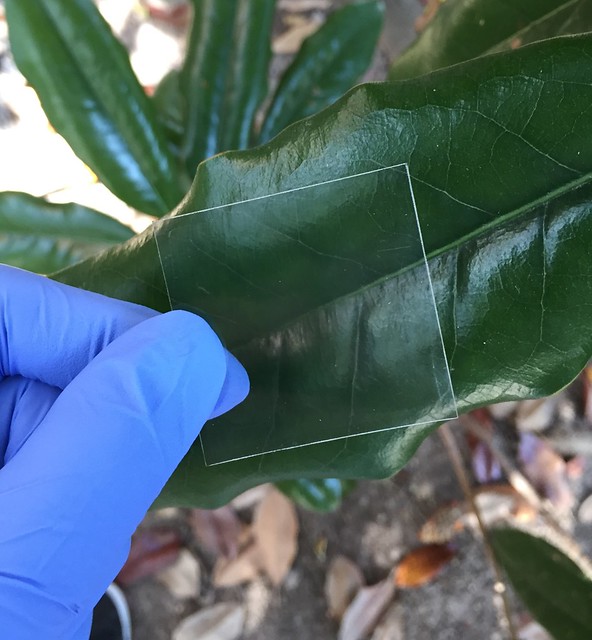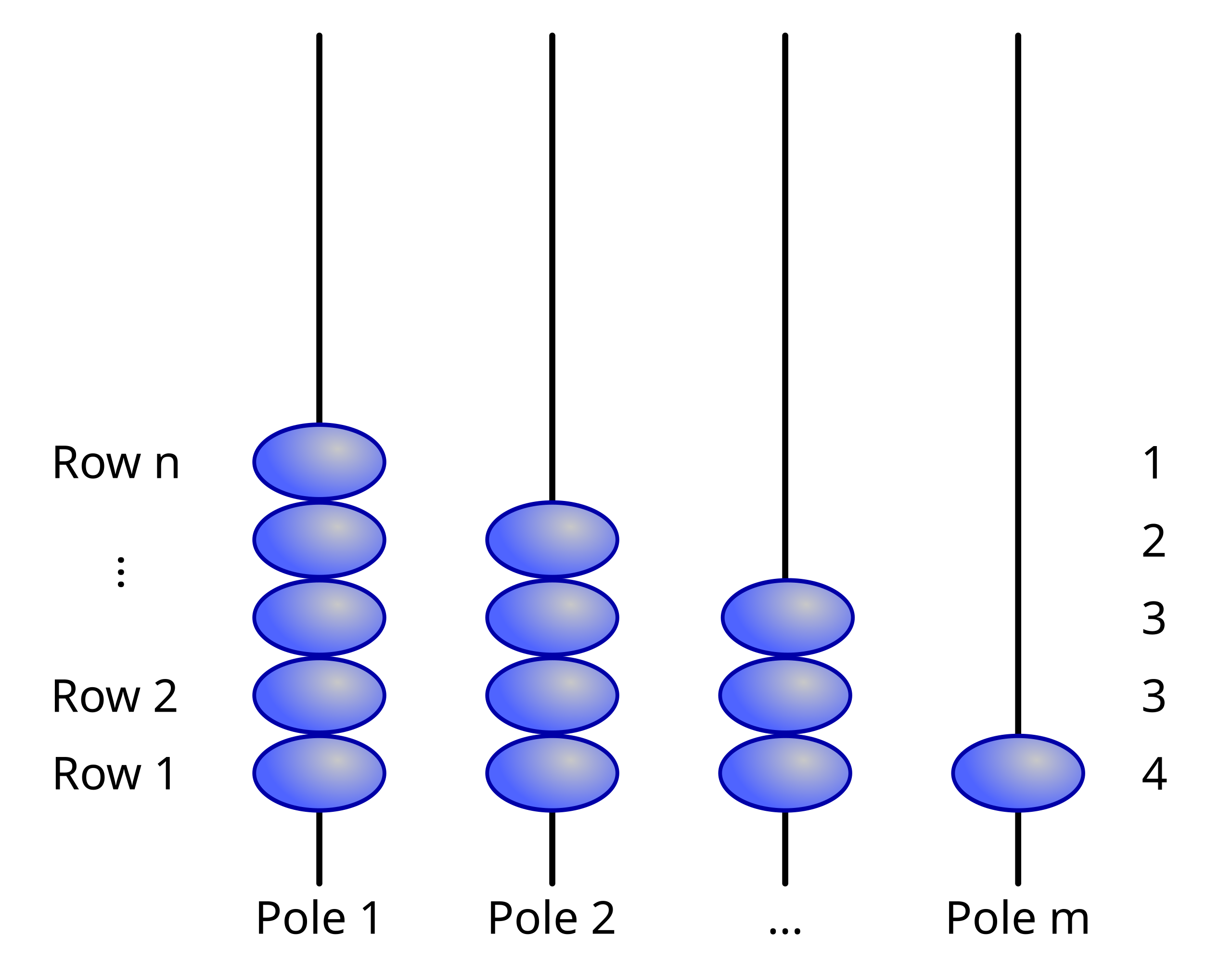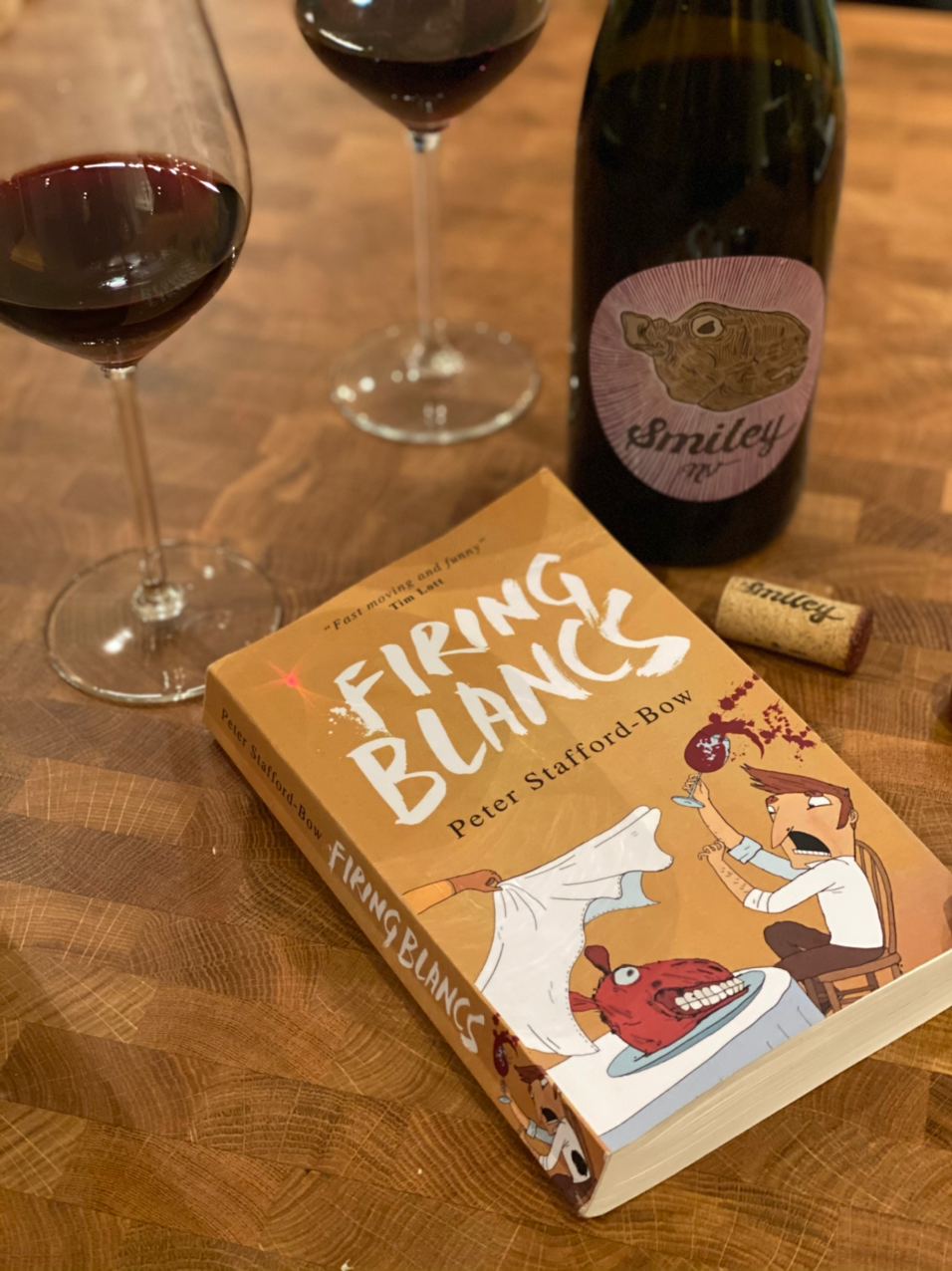Tuesday Triage #12
- TUESDAY TRIAGE #12 by Vadim Drobinin
- q.b.
- Things I enjoyed reading
- 1. Peak Newsletter? That Was 80 Years Ago by Michael Waters
- 2. The economics of vending machines by @zzcrockett
- 3. Pressing YubiKeys by @bertrandom
- 4. Good Design: A Review of the Apple Face Mask by Rain Noe
- 5. Pinocchio Dies, Bambi Gets Shot, and Other Surprising Changes to Disney Movies by Troy Brownfield
- 6. LLDB Reproducers by @SmileyKeith
- 7. Why does organic milk last so much longer than regular milk? by Craig Baumrucker
- 8. Apple Watch Momentum Is Building by Neil Cybart
- 9. Reverse Engineering a North Korean Sim City Game by Ben
- 10. When we lose weight, where does it go? by Ruben Meerman and Andrew Brown
- Things I didn't know last Tuesday
- 1. Ogden's Basic English
- 2. Wood can be made transparent
- 3. Modulo Sperimentale Elettromeccanico
- 4. Subway bread is too sugary to be called 'bread'
- 5. Poissons, ecrevisses et crabs
- 6. Brick pencil
- 7. Ackee
- 8. October surprise
- 9. Bead sort
- 10. Kvevri
- Book of the week
- Thank you and see you in a week!
TUESDAY TRIAGE #12
by Vadim Drobinin ¶
Your weekly crème de la crème of the Internet is here!
06.10.2020 (read in browser)
q.b. ¶
People talk a lot about recipes.
Occasionally they talk about food recipes.
Mostly they discuss recipes for success, whether it is success in life, career, or relationships they are striving for.
They do ask me about my personal recipes from time to time, and to that moment I have been fairly sceptical of my abilities to write down the exact quantities and ratios of my life.
I can do it now though.
Thanks to an Italian measurement quantobasta, which literally translates to "how much is enough", and in a Pickwickian sense to "what you think is the right amount".
To me, using q.b. instead of a pinch or 1 tsp or 10 000 hours brings a few assumptions to the game:
- it means you have a good enough taste or instincts to make it taste great
- or it means you need to practice the recipe again and again until you learn what does q.b. mean for that particular thing
Now, my life recipe does have quantobasta in every single line, and yet I am pretty much convinced it is quite universal.
Feel free to use it too, I do not mind.
Things I enjoyed reading ¶
1. Peak Newsletter? That Was 80 Years Ago by Michael Waters ¶
It just felt ironic enough to start this week's newsletter with an overview of newsletters in 1940s. Spoiler: they've been around for almost a century and yet not that many have managed to make them work well enough:
In 1940 an entrepreneurial Chicago Tribune journalist named George Seldes quit his job to launch a newsletter. Newspapers, Seldes said, were “on the side of the free enterprise profits at public expense.” Like Claud Cockburn before him, Seldes wanted to print the stories that he felt the mainstream press had ignored.
2. The economics of vending machines by @zzcrockett ¶
In my childhood I had a dream: to own one of those vending machines with sweets and snacks, lock it up in my room and grab Twixes whenever I want.
Twenty years ago, operators had to drive to each machine on a semi-daily basis and jot down the items they needed by hand. Today, telemetry tools have largely allowed newcomers to operate remotely.
I guess, these days I can either buy these sweets, or finally buy a machine, and yet a sneak peek into their economics is insightful enough to postpone that life-changing decision.
I might be better off with a potato farm, or something.
3. Pressing YubiKeys by @bertrandom ¶
While owning a physical key from something virtual does seem to be a bit... unexpected, it is one of the best ways to ensure the security is taken care of.
Not in this case though. Not at all :)
I showed this to someone and they said, “So.. you built a button that you press that will press a button? Why not just press the button?” which was a bit infuriating because they clearly missed the whole point. “Don’t you get it? This button BAD, but this button GOOD. Me want to press GOOD button.”
4. Good Design: A Review of the Apple Face Mask by Rain Noe ¶
I am not really surprised that if Apple does something, it does it great (unless it's a cheese-grater-looking box). Here is another example: they've created face masks taking into account everything, from protecting glasses to covering beards.
First off, each mask is good for five periods of eight hours each, with manual re-washing required in between. This removes the need for the user to calculate when to switch masks; for the average office drone, one mask will last for one workweek, with a daily washing conducted at the end of each day.
5. Pinocchio Dies, Bambi Gets Shot, and Other Surprising Changes to Disney Movies by Troy Brownfield ¶
Reading fairytales in my childhood could have been quite a traumatic experience, especially given that Disney movies rarely were true to the actual books, so these stories would usually end up in nightmares, not real memories.
However, this bit in particular is a nice explanation to the lack of 101 Dalmatians' sequel:
What makes the origin here so notable is the reason that Disney never adapted the sequel; frankly, it’s weird. Named The Starlight Barking, the novel deals with humanity being placed under slumber by Sirius, Lord of the Dog Star, an alien canine that has come to warn the animal population that they need to escape Earth before nuclear war begins.
6. LLDB Reproducers by @SmileyKeith ¶
I really liked that solution to reproducible bug reports. Really surprised people don't talk about it more:
Reproducers provide a way to run LLDB while also capturing information about your debugging session. With this information you can submit a more useful bug report to Apple with a reliable reproduction case.
7. Why does organic milk last so much longer than regular milk? by Craig Baumrucker ¶
The title felt like an ad but at least I managed to confirm that I am not alone at thinking that long-life milk has a weird aftertaste:
One reason is that UHT-treated milk tastes different. UHT sweetens the flavor of milk by burning some of its sugars (caramelization). A lot of Americans find this offensive—just as they are leery of buying nonrefrigerated milk. Europeans, however, don’t seem to mind.
8. Apple Watch Momentum Is Building by Neil Cybart ¶
Out of many gadgets I've bought, Apple Watch was always one of the most frustrating. To be frank, I never managed to use it for something bigger than push notifications, time, and swimming tracking. Essentially, I always considered it to be a "glorified smartphone accessory". Everything has changed with watchOS 6 and its independent apps though:
If the Apple Watch is a runaway train, there is no obvious candidate in a position to stop or even slow the train. While other companies are slowly waking up and seeing the momentum found with Apple Watch, there is still much indifference, mystery, and misunderstanding as to why people are buying wearables. Too many companies still think of wearables as glorified smartphone accessories.
9. Reverse Engineering a North Korean Sim City Game by Ben ¶
A great series of insights into both reverse engineering but also the way North Korean apps market operates (who'd think that they have physical app stores on almost every street?...)
- The game’s monetization strategy was adapted to the country’s infrastructure (low internet/intranet availability, physical app stores)
- The North Korean version eschews the original freemium + online microtransaction model for a one-time licence purchase + offline microtransaction model
10. When we lose weight, where does it go? by Ruben Meerman and Andrew Brown ¶
An exciting overview of the way our body processes energy:
If you lose 10kg of fat, precisely 8.4kg comes out through your lungs and the remaining 1.6kg turns into water. In other words, nearly all the weight we lose is exhaled.
I will just try to exhale a bit more often, I guess?
Things I didn't know last Tuesday ¶
1. Ogden's Basic English ¶
Apparently removing all redundancies, synonims, etc from the English language leaves us only with 850 words or so:
We call this simplified language Basic English, the developer is Charles K. Ogden, and was released in 1930 with the book: Basic English: A General Introduction with Rules and Grammar. He founded the Orthological Institute to develop the tools for teaching Basic English. His most famous associate, I.A. Richards, led the effort in the Orient, which uses the techniques to this day.
The most interesting bit is, that change doesn't affect the grammar, so one could learn only 850 words and yet converse in English by using its grammar to its full extent.
2. Wood can be made transparent ¶

While a nice trick on its own, transparent windows but transferring heat as wood could save millions to British folks:
Transparent wood is created when wood from the fast-growing, low-density balsa tree is treated to a room temperature, oxidizing bath that bleaches it of nearly all visibility. The wood is then penetrated with a synthetic polymer called polyvinyl alcohol (PVA), creating a product that is virtually transparent.
3. Modulo Sperimentale Elettromeccanico ¶
Venice has managed to hold back the flood water for the first time in 1200 years, thanks to
The defense system is called MOSE, the Italian for Moses, a name derived from the more functional Modulo Sperimentale Elettromeccanico, meaning Experimental Electromechanical Module. It consists of 78 flood barriers installed in the seabed at the lagoon's three main entrance points.
I quite like that they have named it after Moses. Seems very fitting.
4. Subway bread is too sugary to be called 'bread' ¶
According to the Subway Ireland website, the chain's six-inch and footlong subs are available on six different kinds of bread, including nine-grain multi-seed, Italian white bread, Italian herbs and cheese, nine-grain wheat, hearty Italian, and honey oat. And, according to the country's Supreme Court, all six varieties are too sugary to legally be called "bread" at all.
I know, one would ask, how did they even end up suing the country for the right to call (or not) something "bread". Apparently, in Ireland there is a category of "staple food", which includes bread, and everything in it doesn't get taxed.
No luck for Subway then.
5. Poissons, ecrevisses et crabs ¶
Louis Renard published a book in 1719, called "Poissons, ecrevisses et crabs":
In the 18th century, Europeans knew very little of Indonesian wildlife. Renard knew even less, but that didn’t stop this Dutch bookseller from confidently producing this vibrant two-volume collection. Thirty years in the making, the 100 plates carry 460 illustrations of marine biology.
Thanks to him, here is how Europeans imagined Indonesian wildlife:

6. Brick pencil ¶
Doug Engelbart, one of the people behind the creation of a computer mouse, and then graphical interfaces, argued about interfaces in his paper "Augmenting Human Intellect: a Conceptual Framework" in 1962 and to proof his point came up with a brick pencil:
Brains of power equal to ours could have evolved in an environment where the combination of artifact materials and muscle strengths were so scaled that the neatest scribing tool (equivalent to a pencil, possible had a shape and mass as manageable as a brick would be to us-assuming that our muscles were not specially conditioned to deal with it. We fastened a pencil to a brick and experimented. Figure 2 shows the results, compared with typewriting and ordinary pencil writing. With the brick pencil, we are slower and less precise. If we want to hurry the writing, we have to make it larger. Also, writing the passage twice with the brick-pencil tires the untrained hand and arm.

(and now users complain that they have to click a button twice; such a shame)
7. Ackee ¶
Not sure why and how someone came up with an idea of eating this relative of lychee but it does sound quite dangerous (albeit very popular in Jamaican cuisine):
Growing primarily in the Caribbean and Southern Florida, ackee starts out dangerously toxic, sequestered inside leathery green pods that cluster high aboveground like an imminent arboreal beatdown of clenched fists. As the fruit matures, the pods turn from green to red, their lobes unclenching and splaying open to reveal the three to five fingers of pale yellow or cream-colored ackee flesh within (called arelli), each tipped with a hard, shiny black seed.
8. October surprise ¶
I do not want to be pointing fingers, but seems like presidents of one country tend to have a tradition of doing something noticeable in October.
In U.S. political jargon, an October surprise is a news event that may influence the outcome of an upcoming election (particularly one for the U.S. presidency), whether deliberately planned or spontaneously occurring.
9. Bead sort ¶
Bead sort is a sorting algorithm powered by gravity!
It also looks pretty cool, and might do things in O(n) if you are lucky enough.

10. Kvevri ¶
A nice place to hide some booze during Prohibition Era, but also a great way to ferment cider:
... large earthenware vessels used for the fermentation, storage and ageing of traditional Georgian wine. Resembling large, egg-shaped amphorae without handles, they are either buried below ground or set into the floors of large wine cellars.

Book of the week ¶
From "Firing Blancs" by Peter Stafford-Bow:
Spotting the case I was looking for, I extracted a bottle of red.
"The perfect match for your smiley," I declared, presenting the wine to the table. The men peered at the label.
"Oh man! You've got a smiley wine! That's really cool."
I uncorked the bottle and pured the men a glass before heading back to the kitchen. I cajoled the sheep's head on to a large plate, right side up [...]
Long-time subscribers to this newsletter might remember that I have quoted Peter in the very first edition, for his previous book has reminded me about a place I have visited numerous times.
This reference is even more interesting: I had a surreal experiene of drinking the same wine as the author of the book, at exactly the same time as the main character:

This is Smiley Red from Ryan Mostert at Silwervis, and it actually is very good. All kudos to Sasha for stocking it up for our home wine selection.
Thank you and see you in a week! ¶
If you have any questions, or want to suggest a link for the next newsletter, please drop me a message on Twitter or reply to this email.
Cheers! 🍸